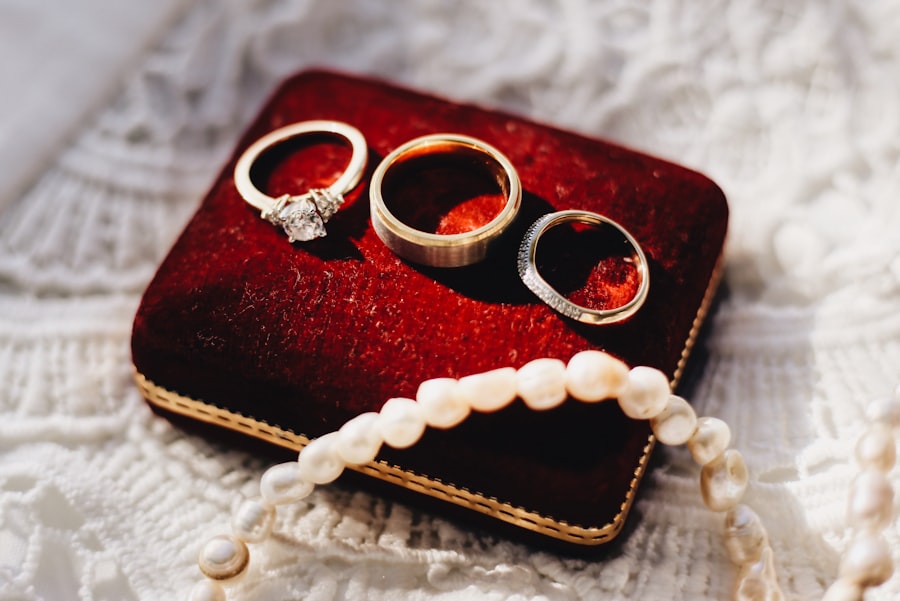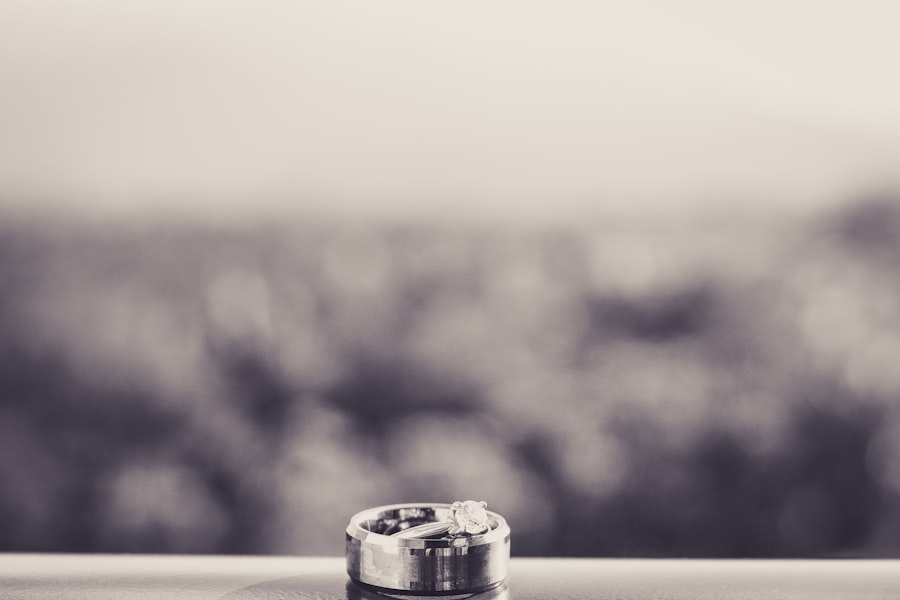The Hands Ceremony, often referred to as the Handfasting Ceremony, has roots that stretch back into the mists of time, intertwining with various cultural practices across the globe. Originating from ancient Celtic traditions, this ritual was initially a way to symbolise the union of two individuals, binding them together not just in love but in commitment. The act of joining hands was seen as a powerful gesture, representing the merging of two lives into one.
In those early days, handfasting was often a prelude to marriage, allowing couples to declare their intentions publicly before a formal wedding took place. As you delve deeper into its history, you will discover that the Hands Ceremony has evolved significantly over the centuries. In medieval times, it was common for couples to be handfasted for a year and a day, after which they could decide whether to continue their union or part ways.
This practice provided a unique opportunity for couples to test their compatibility before making a lifelong commitment. The ceremony itself was often accompanied by various rituals and blessings, reflecting the couple’s cultural background and personal beliefs. Over time, as societal norms shifted and formal marriage became more standardised, the Hands Ceremony began to fade from mainstream practice, yet it has experienced a resurgence in recent years as couples seek more personalised and meaningful ways to celebrate their unions.
Summary
- The Hands Ceremony has a rich history dating back to ancient times, with roots in various cultures and traditions.
- The hand gesture symbolises unity, connection, and the joining of two individuals in marriage.
- The ceremony is typically performed by the couple holding hands and may involve the exchange of vows or blessings.
- The Hands Ceremony holds significant cultural importance in various traditions, representing the coming together of families and communities.
- In modern times, the Hands Ceremony has evolved to incorporate personal touches and can be adapted to reflect the values and beliefs of the couple, while still honouring tradition.
The Symbolism Behind the Hand Gesture
The hand gesture at the heart of the Hands Ceremony is rich with symbolism and meaning. When you think about it, hands are one of the most expressive parts of the human body; they convey emotions, intentions, and connections. In the context of this ceremony, the act of joining hands signifies unity and partnership.
It is a physical manifestation of the promise made between two individuals to support and cherish one another through life’s journey. The intertwining of fingers can be seen as a metaphor for the intertwining of lives, where each person brings their unique qualities to create a harmonious bond. Moreover, the hands themselves are often viewed as tools of creation and nurturing.
They represent the ability to build a life together, to create a home filled with love and understanding. In many cultures, hands are also associated with healing and protection. By joining hands during the ceremony, you are not only affirming your commitment but also invoking a sense of safety and security within your relationship.
This gesture serves as a reminder that both partners are there to uplift each other, providing strength and support in times of need.
How the Hands Ceremony is Performed

Performing the Hands Ceremony can vary widely depending on personal preferences and cultural backgrounds. Typically, it begins with a gathering of family and friends who come together to witness this significant moment in the couple’s lives. As you stand before your loved ones, you may choose to incorporate various elements that reflect your journey together—such as readings, music, or personal vows.
The atmosphere is often filled with warmth and love, creating an intimate setting for this sacred ritual. During the ceremony itself, you will find that the actual act of joining hands is often accompanied by specific words or phrases that hold meaning for the couple. Some may choose to have a celebrant guide them through traditional vows, while others might opt for more personalised expressions of their love and commitment.
The binding of hands can be done using ribbons or cords, symbolising the strength of their bond. As you tie these materials around your hands, it serves as a visual representation of your promises to one another—an enduring reminder of your dedication to nurturing your relationship.
The Importance of the Hands Ceremony in Different Cultures
Across various cultures, the Hands Ceremony holds significant importance and is often steeped in rich traditions. In many Indigenous cultures, for instance, handfasting is not merely a ritual but a deeply spiritual practice that connects individuals to their ancestors and community. It is seen as an opportunity to honour those who came before while also laying down roots for future generations.
The ceremony often includes elements such as blessings from elders or community leaders, reinforcing the idea that marriage is not just a union between two people but also a bond that affects families and communities.
In contrast, some cultures may incorporate unique symbols or rituals into their version of the Hands Ceremony. For example, in certain African traditions, handfasting may involve the use of colourful fabrics or beads that represent different aspects of life—such as fertility, prosperity, and love.
These elements serve not only as decorative features but also as powerful symbols that carry deep meaning within the cultural context. Regardless of the specific practices involved, what remains constant is the underlying message: that love is a universal force that transcends boundaries and connects people across time and space.
Modern Interpretations of the Hands Ceremony
In today’s world, modern interpretations of the Hands Ceremony have emerged as couples seek to make their weddings more reflective of their unique identities and values. Many contemporary couples are choosing to incorporate elements from various traditions while also adding personal touches that resonate with their experiences. This blending of old and new allows for a richer ceremony that speaks to both heritage and individuality.
You may find that some couples opt for non-traditional venues—such as outdoor settings or intimate gatherings at home—where they can create an atmosphere that feels authentic to them. Additionally, personalised vows have become increasingly popular, allowing couples to express their feelings in their own words rather than relying solely on traditional scripts. This shift towards individual expression has breathed new life into the Hands Ceremony, making it a truly bespoke experience that reflects each couple’s journey together.
The Role of Tradition in Today’s Society

Tradition plays a vital role in shaping our identities and connecting us to our pasts. In an age where modernity often overshadows historical practices, many individuals are seeking ways to honour their heritage while also embracing contemporary values. The Hands Ceremony serves as an excellent example of how tradition can be adapted to fit modern sensibilities without losing its essence.
As you navigate through life’s complexities, you may find comfort in rituals that provide structure and meaning. The Hands Ceremony offers an opportunity to celebrate love while acknowledging the significance of cultural heritage. By incorporating traditional elements into your wedding, you not only pay homage to those who came before you but also create a sense of continuity that can be passed down through generations.
This blend of old and new fosters a deeper connection between individuals and their communities, reinforcing the idea that tradition can coexist harmoniously with modern life.
Incorporating the Hands Ceremony into Contemporary Weddings
If you are considering incorporating the Hands Ceremony into your wedding plans, there are numerous ways to make it uniquely yours. Start by reflecting on what aspects resonate most with you as a couple—whether it’s specific rituals from your cultural backgrounds or personal symbols that hold special meaning in your relationship. You might choose to include elements such as hand-painted stones or personalised cords that represent your journey together.
Additionally, think about how you can involve your loved ones in this special moment. Many couples opt for family members or friends to participate in tying the hands together or offering blessings during the ceremony. This inclusion not only strengthens bonds within your community but also creates lasting memories for everyone involved.
By weaving together personal touches with traditional practices, you can create a Hands Ceremony that is both meaningful and memorable.
Embracing the Meaning and Significance of the Hands Ceremony
Ultimately, embracing the meaning and significance of the Hands Ceremony allows you to celebrate love in its most profound form. It serves as a reminder that relationships require effort, understanding, and commitment from both partners. As you stand before your loved ones with joined hands, you are making a powerful statement about your intentions for the future—a promise to nurture your bond through life’s challenges and joys.
Incorporating this ceremony into your wedding not only enriches your experience but also invites others to reflect on their own relationships and commitments. It encourages conversations about love, partnership, and community—reminding us all that we are part of something greater than ourselves. As you embark on this journey together, let the Hands Ceremony be a guiding light that inspires you to cultivate love in all its forms throughout your lives together.
If you’re considering a more intimate setting for your wedding, you might find the article on “Intimate Ayrshire Weddings: The Beauty of Small Celebrations” quite enlightening. It explores various charming venues in Ayrshire that are ideal for smaller, more personal wedding ceremonies. The piece provides a detailed look at how these venues cater to couples looking for a cosy yet memorable setting to exchange their vows. For more insights, you can read the full article here.
FAQs
What is a hands ceremony?
A hands ceremony is a symbolic ritual often included in wedding ceremonies, where the couple’s hands are joined or bound together to represent their union and commitment to each other.
What is the significance of a hands ceremony?
The hands ceremony symbolizes the coming together of the couple, their promise to support and care for each other, and their commitment to facing life’s challenges together.
How is a hands ceremony performed?
During a hands ceremony, the couple’s hands are typically joined together, often with a ribbon, cord, or other meaningful item. The officiant or a chosen individual may speak words of blessing or significance as the hands are joined.
Is a hands ceremony a traditional part of a wedding?
The hands ceremony has roots in various cultural and religious traditions, and it is often included in non-traditional or alternative wedding ceremonies. It is not a standard part of all wedding ceremonies, but many couples choose to incorporate it to add a personal and symbolic touch to their special day.
Can a hands ceremony be personalised?
Yes, a hands ceremony can be personalised to reflect the couple’s beliefs, values, and cultural background. Couples can choose specific words, blessings, or items to incorporate into the ceremony that hold personal significance to them.

